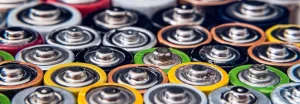Utilize distillation, vacuum distillation, membrane separation, adsorption, and azeotropic distillation for efficient solvent recovery, achieving up to 98% purity.
Selecting the Right Solvent
The right solvent must be used to ensure a better solvent extraction process. Solvents play an extremely important role in this – the better the solvent, the more efficient the extraction and the less impact on the environment. Key factors and techniques to consider:
Solvent Polarity
The polarity of the solvent should be the same as the target compound. Polar solvents such as water are well suited for extracting polar compounds, while non-polar solvents such as hexane are well suited for non-polar compounds. This match will increase the solubility of the target compound in the solvent, thereby improving the extraction yield.
Solvent Selectivity
The ideal solvent is one that selectively dissolves the compound, i.e., the compound precipitates out of the solvent while other substances are not affected by the solvent used. For example, dichloromethane is well suited for extracting caffeine from coffee beans, and dichloromethane is used because it is highly selective for caffeine. This selectivity eliminates additional cleanup steps.
Boiling Point Considerations
The extraction process depends on the boiling point of the solvent to ensure solvent recovery and safety. Since ethanol evaporates easily (hence the low boiling point), simple evaporation is all that is needed to remove the ethanol, which is necessary in large-scale operations. In addition, using a solvent with a moderate boiling point minimizes the risk of thermal degradation of fragile molecules.
Chemical Toxicity and Environmental Impact
Solvent Toxicity and Environmental Consequences. Non-toxic and biodegradable solvents such as ethyl acetate are preferred in food and pharmaceutical extractions. These eco-friendly solvents are not only environmentally responsible, but also improve safety while ensuring compliance with environmental regulations.
Equipment and Solvent Compatibility
Testing Solvents: The selected solvent must be compatible with the extraction equipment. Some solvents can corrode metal parts or plastics, leading to equipment failure and contaminated extractions. Ensuring compatibility is important to ensure the purity of the extracted compounds and interference-free operation.
Quantitative Data on Solvent Efficiency
Several studies have shown that the selected solvent can greatly affect the extraction yield obtained. For example, an ethanol extraction process can provide up to 95% of the target compound, while water can only provide 60%. These data highlight that the choice of solvent has a significant impact on high yield and yield.

Mixing and Contacting Phases
The more efficient the mixing and contacting of the phases, the higher the yield and efficiency of the solvent extraction. The entire process helps improve the interaction between the desired compound and the solvent. The Bottom Line on Mixing and Contacting Key Considerations and Techniques for Mixing and Contacting
Stirring Techniques
Stirring is essential to increase the contact of the material with the solvent. Methods such as mechanical stirring, shaking, and ultrasonic stirring are widely used. However, mechanical stirring can be used for more controlled and consistent mixing, while shaking can be used for small-scale extraction. Ultrasonication: Ultrasonic stirring based on high-frequency sound waves can disrupt cell walls and help the solvent to penetrate to the greatest extent to extract the components.
Residence Time
The contact time between the solvent and the material is directly related to the efficiency of the extraction. The longer the residence time, the higher the yield. But there is a line, as extremely long contact times can lead to the extraction of unwanted compounds. For example, when extracting herbal compounds, an ideal contact time of 30-60 minutes is usually recommended to obtain the highest yield without extracting impurities.
Temperature Control
Mixing needs to be done at the right temperature so that the target compound dissolves and diffuses faster. Generally speaking, the higher the temperature, the more efficient the extraction, but there is also the possibility of deteriorating heat-sensitive compounds. Extraction of essential oils from plants is an example where temperatures are maintained around 40-60°C to maintain a balance between efficiency and compound integrity.
Phase Ratio
The ratio of solvent to material is a critical factor. A higher solvent to material ratio generally increases extraction efficiency, but also increases solvent usage and cost. Optimizing this ratio is critical for both effectiveness and economic efficiency. For example, when extracting caffeine from tea leaves, a common ratio is 1:4 (material to solvent) to ensure there is enough solvent for maximum extraction without overdoing it.
Mixing Equipment
The mixing equipment used can have a significant impact on the efficiency of the extraction process. Laboratory-scale extractions require a magnetic stirrer or a shaker table, while industrial-scale processes may rely on large mixers or even continuous mixers. In the case of large batch continuous operations, continuous mixers are favored for their high capacity and uniform mixing, resulting in uniform extraction.
Quantitative Data on Mixing Efficiency
One study showed that the use of an ultrasonic bath can increase extraction yield by 30% compared to mechanical stirring. For example, ultrasonic extraction of bioactive molecules from plant material can yield 85-90% yield, while mechanical agitation yields approximately 60-70%. These figures highlight the need to choose the right agitation technology to improve efficiency.
Separation of Phases
When solvent extraction is performed to recover the target compound in pure form, an efficient phase separator is very important. The process requires specific methods to properly remove the solvent from these extracted compounds. Take a look at some of the most important factors and some techniques to understand how to separate the phases as best as possible within the famous two-tube (conical tube).
Decantation
The lighter liquid from the denser layer is then slowly poured into another container, a process called decantation. Decantation is very simple and works well due to the large difference in density between the solvent and the raw material to be extracted. For example, in oil production, water can be separated from oil due to the large difference in density, and the same is true for other processes.
Centrifugation
When centrifuges are used, they speed up the phase separation. The lighter components stay at the top, and the denser components settle at the bottom of the tube through centrifugation. This method works very well for fine particles or emulsions that are difficult to separate through decantation alone. For example, the pharmaceutical industry uses centrifugation to remove drugs from the extraction solvent, purifying and increasing the yield of these and other active compounds.
Filtration
There are other compounds that cannot be dissolved in general substances and can be separated by filtration, where the mixture passes through the channel leaving solids and the fast process passes through in liquid form. Different types of filtration include gravity filtration, vacuum filtration, membrane filtration, which are applied based on the requirements of the mixture. In solvent extraction, vacuum filtration is the preferred filtration because it can quickly remove particles from the solvent.
Solvent Evaporation
Heating the mixture causes the solvent to evaporate, leaving the extracted compounds. This process is suitable for solvents with relatively low boiling points. For example, in essential oil extraction, the solvent (usually ethanol) is evaporated or distilled under reduced pressure to leave behind the pure essential oil. Laboratory cooling equipment such as rotary evaporators are often used to achieve this purpose because the temperature and pressure can be precisely controlled.
Use of Separating Funnel
Liquid-liquid extraction requires the use of a separating funnel to separate immiscible liquids by density differences. Pour the solution into the funnel, shake to mix, and then let the layers settle. You can then remove the drain at the bottom and pour out the denser layer, leaving the remaining lighter layer. Due to its simplicity and ease of use, this method is widely used in chemistry laboratories to filter extracted compounds from solvents.
Example of Herbal Separating Funnel Extraction
Separating funnels are often used to extract bioactive compounds from herbs. For example, when extracting alkaloids from plant materials, water and chloroform complement each other and separate well on a separatory funnel. The above chloroform layer (extracted alkaloid) is separated and the pure compound can be isolated.

Solvent Recovery
The solvent recovery process is one of the solvent extraction steps and is very important because it allows the solvent to be reused in a more cost-effective manner and reduces the amount of waste discharged into the environment. Read on to learn about some of the best practices and top considerations for solvent recovery.
Distillation
Solvent recovery is primarily accomplished through distillation. This involves heating the solvent mixture until the solvent evaporates and then cooling it back to a liquid. For example, using distillation, we can achieve up to 95% pure ethanol recovery when doing plant extraction. Therefore, this method works very well for solvents with widely varying boiling points.
Vacuum Distillation
Today, the most commonly used technique is vacuum distillation because the vacuum lowers the boiling point of the solvent, thereby reducing emissions and collateral damage. The former is suitable for heat-resistant or high-boiling solvents. It is used in the pharmaceutical industry in order to recover solvents such as methanol and ethanol without the deterioration of heat-sensitive compounds that occurs in simple static distillation.
Membrane Separation
The solvent mixture is passed through a selective membrane that allows the solvent to pass through but retains the extracted compounds. Solvent Recovery: Membranes are often used, especially ultrafiltration and nanofiltration. Recovery rates of more than 90% can be achieved for high-value applications such as ethanol in flavor extracts found in the food industry.
Adsorption
Use substances such as activated carbon or silica gel to preferentially adsorb the solvent in a mixture. It can be used to recover solvents from dilute solutions or mixtures with boiling points close to each other. For example, an organic solvent in an aqueous solution can be passed over activated carbon, the solvent is adsorbed, and then desorbed from the activated carbon for reuse.
Azeotropic distillation
Azeotropic distillation is the process of distilling a binary mixture of two liquids that tend to form an azeotrope, meaning that at a specific temperature and azeotrope composition, the vapor can be distilled off without changing the azeotrope composition. Azeotropic distillation Adding an entrainer destroys the azeotrope of the original solvent mixture, so the original solvent is either separated … This is commonly used in the chemical industry to recover solvents such as ethanol and benzene from azeotropic mixtures.
Quantitative data on solvent recovery efficiency
Industrial application data show that vacuum distillation can achieve a 20-30% higher recovery rate for a specific solvent than conventional distillation. When recovering ethanol from a pharmaceutical process, the vacuum distillation process will achieve a recovery rate of 95-98%, while conventional distillation will only achieve a recovery rate of 70-80%. These figures also illustrate why it is so important to choose the right solvent recovery method so that you can work most efficiently and minimize waste.
Purity Assessment
For solvent extraction, purity assessment is necessary to ensure that the extracted compounds meet the standards used. The main methods to accurately measure the purity of the extracted material are:
Chromatography
They use various chromatography methods to evaluate the compounds obtained. Liquid chromatography, especially HPLC or gas chromatography, is a common method. HPLC is best suited for separating and measuring components in a mixture and can give a good idea of the purity involved. For example, in the pharmaceutical field, HPLC can detect impurities as low as 0.1% by weight and guarantee a solution of 99.9% purity.
Spectroscopy
Various spectroscopic techniques, such as UV-visible spectroscopy and infrared (IR) spectroscopy, are essential for purity determination. By comparing the absorbance of UV or visible light, we are able to determine the presence of specific compounds in a sample using UV-visible spectroscopy. It will then give a fingerprint of the purity of the compound through the absorption of functional groups in the sample by the infrared spectrum. In research and industry, these techniques are essential to confirm the identity and purity of the extract.
Mass Spectrometry
Mass spectrometry (MS) provides accurate molecular weight and structural information and has become a powerful analytical tool for purity determination. It has high sensitivity for many impurities, even at the parts per billion (ppb) level, and can detect and quantify trace impurities with MS. For example, during essential oil analysis, MS can tell the analyst the exact amount of trace impurities and degradation products that could compromise the quality and performance of the essential oil.
Melting Point Determination
Melting point determination is a more direct test of the purity of a solid compound. Pure substances have a unique melting point range, and impurities often lower and widen that range. For example, you can check the melting point of a pharmaceutical compound to determine purity by comparing the observed value to the expected value, ensuring compliance with pharmacopoeial standards.
Titration
Titration is a laboratory chemical analysis method that determines the amount of a specific substance dissolved in a solution. Solvent extraction titrations can be used to determine the purity of (reactive) acids, bases, and other reagents. This can be illustrated by indirectly determining the concentration of citric acid by titrating the resulting citric acid with a standard base.
Quantitative Data on Purity Assessment Techniques
Research has shown that combining multiple purity assessment techniques can provide a more accurate and reliable assessment. For example, the combination of HPLC and MS can enable detection limits of impurities as low as 0.01%, compared to 0.1% using HPLC alone. This combination increases the robustness of the purity assessment process, ensuring greater confidence in the results.
